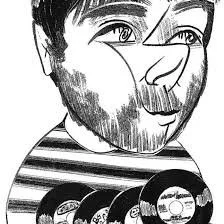We Buy Old 45RPM Records!
We Buy 45s!
“When trying to sell your 45RPM records, be aware that in some cases they can have better value than LPs. Rarer titles and better conditions, of course, help a lot.”
Looking for a place that buys 45 records near you? At We Buy Records, we are not only dedicated to providing a seamless and hassle-free experience but also committed to giving your cherished 45s a new lease on life. No matter the reason for selling your records - whether it's to downsize your collection, refresh your musical taste, or simply make some extra cash - our experienced team is ready to offer you top dollar for your 45rpm treasures whether you live close to Milwaukee or are anywhere else in the USA!
Our simple process begins when you bring your beloved 45rpm records to our store at 904 E Center St, Milwaukee, WI 53212. Our knowledgeable staff, equipped with years of expertise buying second-hand vinyl records, will meticulously evaluate your collection and provide you with a fair and competitive offer on the spot. Unlike other buyers, we take the time to assess the rarity, condition, and demand of each record, ensuring that you receive the best value for your treasures.
No collection is too big or small for us. Whether you have a stack of sought-after rock 'n' roll classics, R&B gems, or rare soul singles, we are interested in them all! Our specialization spans various genres, including but not limited to rock, pop, jazz, funk, disco, and punk. So, don't let those boxes collect more dust - let our team of experts turn your forgotten vinyl into cold, hard cash.
We understand the significance of your music collection and treat every record with the utmost respect. Our fair prices and transparent buying process are a testament to our commitment to customer satisfaction. We are proud to contribute to the thriving music community in Milwaukee by connecting enthusiasts with their long-awaited additions.
So why wait? Don't let your 45rpm records sit idle any longer. Visit We Buy Records today and unlock the value of your vinyl collection. With us, there's no time like the present to turn your musical treasures into cash. Remember, our doors are open every day, so make the most of now and let us give your records a new home with avid collectors.
Why 45s Still Matter
Since the 1950s, the 45rpm single has been the format of choice for hit songs, local releases, and underground sounds. DJs, collectors, and fans have kept the format alive because 45s capture the energy of a moment—often pressed in smaller numbers than full albums.
Today’s Value
Many rare 45s are now worth more than LPs, especially soul, funk, punk, and regional releases that never saw wide distribution. That’s why we specialize in buying 45s, whether it’s a small box or a large collection, sleeves or not.


